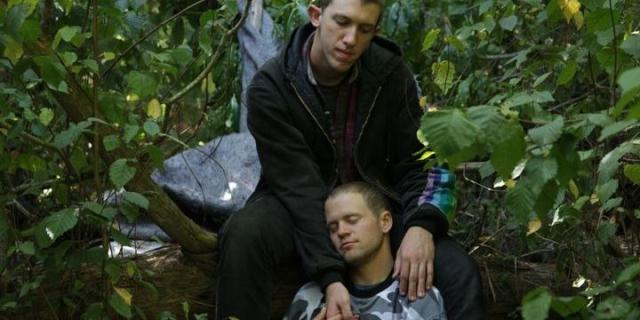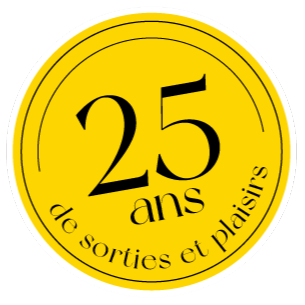RIDM 2013: ‘American Vagabond’ chips away at the myth of San Francisco as a promised land for all gays
Auteur: Michael-Oliver Harding
San Francisco takes great pride in its standing as quite possibly the “gayest city in the world,” to quote James, the charismatic lead character in Susanna Helke's new documentary American Vagabond, premiering this week at RIDM. Films such as Milk and We Were Here speak to a time in the not-too-distant past when gay and lesbian people of all stripes banded together to fight for their rights and foster a sense of community. What you often don’t hear about is how homeless queer youths fare in this ‘gay mecca.’ For the sake of brevity, it’s not good. These marginalized kids, often thrown out of their homes by bigoted parents, head to the “city at the end of the rainbow,” only to realize that SF’s LGBT community looks down upon them and that this left-leaning metropolis is for the most part a pretty inhospitable place for those who can’t afford it.
Finnish filmmaker Susanna Helke spent many years living in the Bay Area, where she was confronted on a daily basis with kids unable to latch onto this elusive American Dream. James and Tyler, the two leads in Helke’s deeply poignant doc, were kicked to the curb by religious parents who wrote them off as ‘diseased’ and ‘deficient,’ so the couple sought refuge in the unreceptive streets of San Francisco. American Vagabond finds the couple struggling to find a welcoming home and negotiating its broken relationship with parents who can’t accept them for who they are.
With the premiere of HBO’s Looking, a San Francisco-set dramedy being touted as the gay counterpart to GIRLS, less than two months away, it’s interesting to bring another perspective on contemporary SF into the mix: one that focuses on those not lucky enough to count on the support of loved ones, without access to prestigious college degrees or the well-paying jobs that follow graduation. Helke and creative producer Mary Morgan spoke to Nightlife.ca mere hours after landing in Montreal, about the changing face of homelessness in the U.S., the transformation of San Francisco and the genius of Gus Van Sant.
How did you first come across James and what about him made you want to document his journey?
Susanna: When I started doing research for the film, I was invited by a community organization that was planning a drop-in centre in the Castro for queer youth. James and Tyler were at that meeting, with their baseball caps, laptop and infamous tennis rackets, and I was like, 'who are those guys?' I went up to talk to them, and immediately, I could tell that James had that spark in his eyes; he was interested in being a part of this project.
Mary: Susanna wanted an All-American boy, someone who wasn’t into alcohol or drugs, to represent this as an issue. Someone who came from Middle America, so that his backstory would speak to larger issues.
Susanna: There was also something very compelling about James’ relationship with his mom, even though he was homeless in San Francisco at the time… You could tell that there was this bond. He hadn’t completely turned his back on her. It was also important that I not feel pity for the main character – and James has a good sense of irony and humour about himself… I had found my perfect characters, these young lovers living in Golden Gate Park, and it was scary, because I didn’t even have funding yet!
I was both surprised and dismayed to learn that 20-40% of homeless youths in big American cities identify as sexual minorities. Did you know that going into the project?
Susanna: Yes, I learned that while researching the project and was quite shocked as well. It’s been kind of a hidden epidemic in the U.S. Of course, you don’t realize it at first, because there are millions of homeless people, especially young people. But it’s not a situation that is specific to the U.S. Sometime after the film came out, this past summer, there was this feature story in Le Monde about a young queer boy that had been kicked out, and when I was doing research for this project, I’d often end up reading stories from England and Canada.
Your film seems to draw a parallel between the small-town intolerance and homophobia that kicks these kids out of their Bible-belting homes, and the discrimination they also experience in a city that’s supposedly a haven for outcasts and sexual minorities.
Susanna: Yes, I think that both forms of discrimination exist in these young people's world: this form of social/cultural discrimination on the part of their parents and this economic discrimination on the part of the gay community. I think that, due to their situation and because they don't have much money, they don't fit in well with the rest of SF's LGBT community. It may be cool to be gay in SF but you have to be rich to be cool!
The general attitude that we witnessed in SF is that homeless queer youths are either invisible or are perceived as cluttering the fancy Castro and ruining the party atmosphere. When we were filming the youths, guys would walk by and tell them “get a job” or roll their eyes… It’s the sad reality of SF today: there are a lot of stories of people coming there in the ‘70s to seek refuge and finding a sense of community, and this idea that “we are all poor, so we help each other.” But now, that need for an overarching gay community is no longer there. Now, it’s rather about keeping to the gay community that belongs to your social class.
American Vagabond avoids conventional talking-head footage, opting instead for a slew of innovative storytelling tools, all the more impressive given that your main character disappears for a significant chunk of time. What filmmakers inspired your aesthetic approach?
Susanna: Gus Van Sant is one of my absolute favourite American directors, and it’s so fascinating how – even with his more mainstream-y films, like Promised Land – there’s always something ghost-like, ominous, some kind of dark matter behind the things you see. And in many of my films, there are these invisible components as well, and in this film, I had to get around a lot of challenges, like halfway through the film, I have a main character that I can’t show anymore because he’s in prison, so I had to start inventing creative methods to keep this going. And the title is an allusion to Agnès Varda, because the title of her 1985 fictionalized film about a young drifter found dead is Vagabond.
American Vagabond
Plays November 20 at 8:15 p.m. at Cinéma du Parc, as part of the Rencontres internationales du documentaire de Montréal | americanvagabondfilm.com
